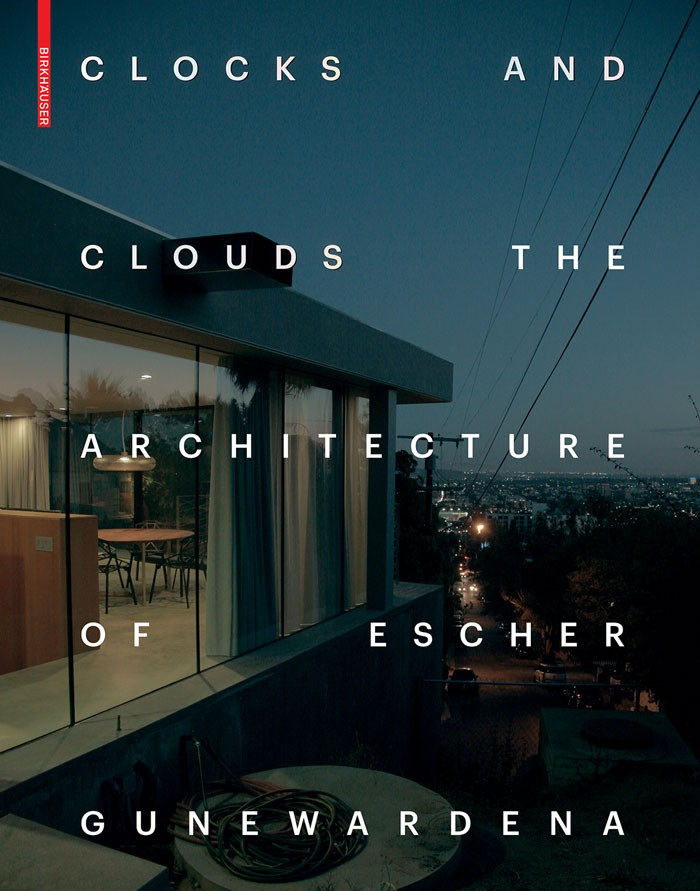Editor: Lilian Pfaff
Clocks and Clouds: The Architecture of Escher GuneWardena, a monograph covering about 30 selected projects – unbuilt and completed – spanning a period of 20 years. The work includes, in addition to expected building types of residential, commercial and institutional categories, projects outside of the architects’ usual realm: Escher, an expert on John Lautner (1911-1994), has edited/co-authored two books on this architect and the firm has restored the Chemosphere and the Eames House. Further, stemming from the principals’ interest in contemporary art, the firm has collaborated with artists such as Olafur Eliasson, Sharon Lockhart, Steven Prina, Mike Kelley and others, and has designed spaces for art and museum exhibitions nationally and internationally.
The book will include an introductory text and essays by various writers familiar with their work (Martino Stierli, Barbara Lamprecht, Nicholas Olsberg, Lilian Pfaff, Sabine Eckmann, Mimi Zeiger and Paulette Singley). The essays will convey recurring concepts in the architects’ work ranging from ideas of “order” and “system”, to “accidental form”, and the subtle manipulations that lie between these positions, or what philosopher Karl Raimund Poppers categorizes as “clocks and clouds”: that which can be measured exactly (clocks); and that which has indefinite occurrences (clouds).
